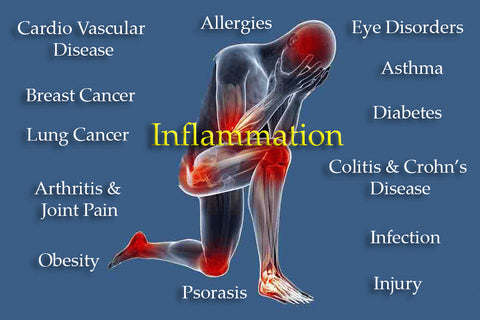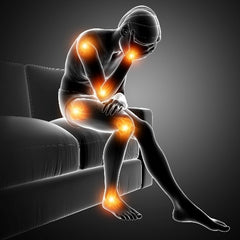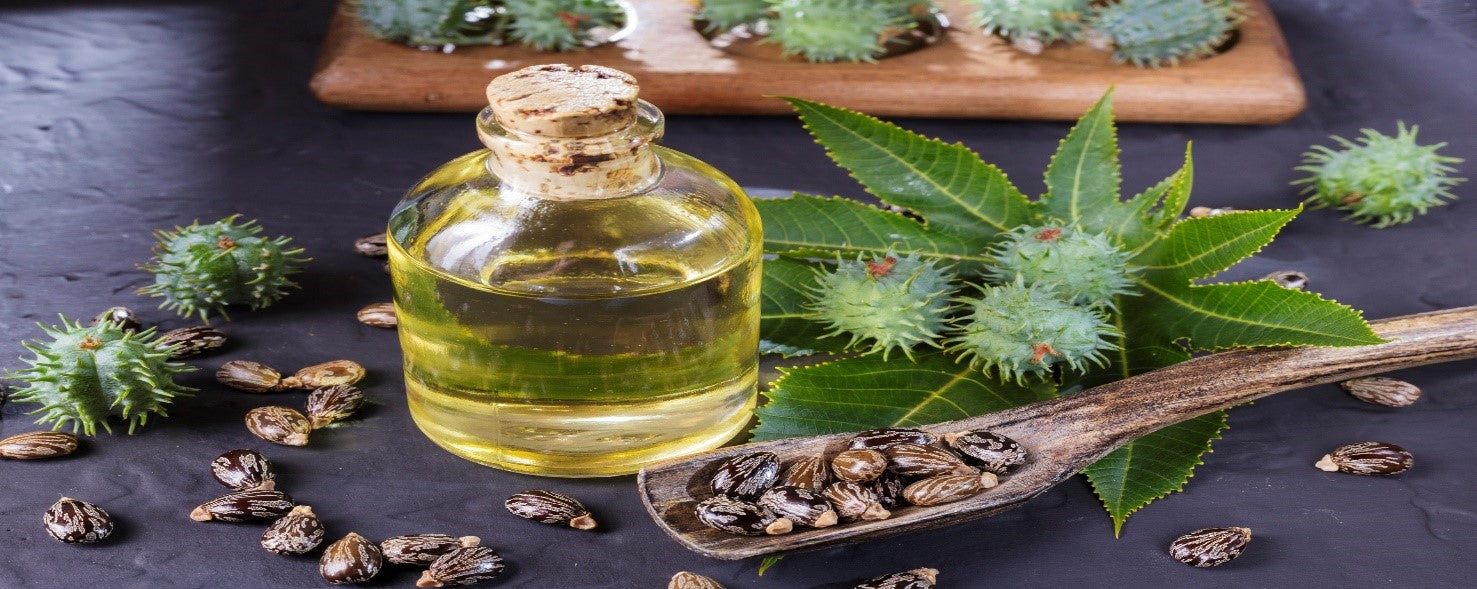There is no an product in your account
please add some product to cart.
The Miracle of Castor Oil Pack
Posted by John Coppola on 17 Apr, 19
Castor oil has a long and colorful history spanning thousands of years of curative remedies.
In ancient Rome, the castor oil plant, also known as “Palma Christi” or the hand of Christ was grown and used for many health ailments.
Therapeutically, castor oil dates to ancient times in India, China Persia, Egypt, Africa, and Greece. In fact, Egyptian medical texts (Ebers Papyrus) dating back to 1500 b.c showed that Egyptian doctors used castor oil for many eye remedies. In India, castor oil was treasured for its curative power with digestive problems, as a natural antibiotic and for treating skin infections. The use of castor oil was introduced to Europe in 17th century and to America in the 1800’s (early pioneer days).

The Castor plant is indigenous to the southeastern Mediterranean Basin, Eastern Africa, and India. It is also widespread throughout tropical regions. The best castor plants reportedly are found in Kerala, India.
If you are old enough, you may remember your grandmother recommending a castor oil pack for many ailments, which may have included menstrual cramps, headaches, liver and gallbladder inflammation, constipation, appendicitis, arthritis, intestinal disorders, toxemia, tumors, clearing skin disorders and warts. Grandma wasn’t crazy, nor was she eccentric. Castor oil is one of the Earth’s most versatile healing gifts.
Historically, castor oil has also been used for non-medicinal purposes, such as, facial oils (moisturizers), leather goods lubricatant and fuel for oil lamps.
What Is Castor Oil?

Castor oil, also called rincus oil, is a triglyceride of fatty acids. Almost 90% of its fatty acid content consists of ricinoleic acid which comes from the seeds of the castor bean (Ricinus communis) plant. These seeds are then extracted for its oil via cold press method, leaving the raw, active enzymes intact. This method (cold processing) does not use toxic carcinogenic chemicals (hexanes) to extract the oils.
Castor oil is very thick with a color that ranges from clear to amber or slight green tinge. It has a mild scent and taste. It contains many beneficial components, including fatty acids, flavonoids, phenolic compounds, amino acids, terpenoids and phytosterols.
One of the chief players, ricinoleic acid, may be responsible for the effectiveness of castor oil. Castor oil has a high concentrate of this unusual unsaturated fatty acid, which many scientists attribute to its remarkable healing abilities.
Current research has shown that ricinioleic acid is effective in preventing the growth of numerous species of viruses, bacteria, yeasts and molds. Used topically, castor oil has a high degree of success in clearing stubborn skin ailments such as ringworm and inflammation.
Health benefits of castor oil:
1. Improves Immune Function
Castor oil has been shown to help improve lymphatic drainage, blood flow, thymus gland health and other immune system functions.

A small, double-blind study published in the Journal of Naturopathic Medicine looked at the effects of castor oil packs on 36 human subjects. The packs covered a 12-inch by 12-inch area of the skin on the upper right quadrant of the abdomen. The subjects had the packs applied for a total of two hours. Then 4 blood samples were drawn and studied pre and post treatment.
Here's what the researchers found:
- The subjects who used abdominal castor oil packs had significant increases in the production of lymphocytes
- The patients using placebo packs did not show any increase in lymphocytes.
Lymphocytes are the immune system’s natural “disease-fighters” that attack outside invaders such as toxins, bacteria and other perceived threats.
2. Promotes Wound Healing
Castor oil helps heal wounds in the following way:
- It stimulates the growth of new tissue
- It reduces tissue dryness
- It prevents the buildup of dead skin cells.
Studies have found that ointments containing castor oil may be especially helpful in healing pressure ulcers and bed sores, a type wound that develops from prolonged pressure on the skin.
One study looked at the wound-healing effects of an ointment containing castor oil in 861 nursing home residents with pressure ulcers. Those whose wounds were treated with castor oil experienced higher healing rates and shorter healing times than those treated with other methods.
3. Decreases Inflammation
Castor oil is high in Ricinoleic acid, shown to help reduce pain and inflammation.

Clinical and lab studies have shown that when castor oil is applied topically, it has an anti-inflammatory effect and relieves pain.
The pain-reducing and anti-inflammatory qualities of castor oil may be particularly helpful to those with an inflammatory disease such as rheumatoid arthritis or psoriasis. Castor oil packs have been very helpful in decreasing the pain and inflammation from shingles outbreaks.
4. Relieves Constipation
One of the best-known medicinal uses for castor oil is as an occasional natural laxative. When consumed by mouth, castor oil is broken down in the small intestine, releasing ricinoleic acid. This fatty acid is then absorbed by the intestine, stimulating a strong laxative effect by increasing the movement of the muscles that push material through the intestines, helping clear the bowels.

In fact, several studies have shown that castor oil can relieve constipation. For example, a study conducted in Turkey looked at the effects of castor oil packs on elderly people experiencing constipation. The study participants were monitored for a week before, three days during, and four days after the castor oil pack administration. 80 percent of the individuals studied had been experiencing constipation for 10 years or longer. The researchers found that the oil packs were able to decrease constipation symptoms, most specifically straining during defecation.
While castor oil is considered safe in small doses, larger amounts can cause abdominal cramping, nausea, vomiting and diarrhea. It should only be used to relieve occasional constipation and is not recommended as a treatment for long-term constipation.
5. Fights Fungus
Ever wonder why your tongue has a white coat (or film) instead of a nice pink color? This is caused by candida.
Candida albicans is a type of fungus that inhabits our mouth, along with the intestines, vagina and even our skin. Candida commonly causes dental issues like plaque overgrowth, gum infections and root canal infections.
Castor oil has antifungal properties and may help fight off Candida, keeping the mouth healthy.
One test-tube study found that castor oil eliminated Candida albicans from contaminated human tooth roots. Castor oil may also help treat denture-related stomatitis, a painful condition thought to be caused by Candida overgrowth. This is a common issue in elderly people who wear dentures.
6. Decreases Pain & Inflammation of Arthritis

Castor oil is often used as a natural treatment for arthritis pain, joint swelling and inflammation. Its natural anti-inflammatory properties make it for massaging into aching joints, muscles or tissues.
Observational studies have shown that topical application of castor oil elicits a remarkable analgesic and anti-inflammatory effects.
Try massaging painful areas with castor oil followed by a hot water bottle or heating pad to increase absorption and drainage. Applying this two times per week can give you the best pain-reducing results.
7. Castor Oil Use for Babies

Castor oil offers numerous health benefits to babies. It has been proven to be safe and effective in treating several common ailments suffered by infants.
Utilizing a topical castor oil application can help your infant overcome the following ailments:
- Colic
- Acid Reflux
- Cradle Cap
- Skin Irritations, fungal infections and diaper rash
- Chest congestion
8. Induces Labor
For many centuries, pregnant women at full term have taken castor oil orally to help elicit and speed up uterine contractions. In fact, it is still commonly in a non-medical setting to induce labor.
The reason castor oil can work to induce labor is due to the fact that the ricinoleic acid in the oil can activate EP3 prostanoid receptors in the uterus.
According to a retrospective, observational, case control study conducted over five years and published in 2018, “The use of castor oil is related to a higher probability of labor initiation within 24 hours. Castor oil can be considered a safe non-pharmacological method for labor induction.” In addition, the full-term women study subjects (between 40 and 41 weeks) who took castor oil had a lower incidence of caesarean section.
Is Castor Oil Poisonous?
Some people may tell you that castor oil is dangerous and poisonous. Here are the facts. The active poison in the castor bean is ricin, a deadly water-soluble protein called a lectin. When the oil is extracted from the seed, the ricin is left behind. So, castor oil does not contain any of the poison. The seed is only toxic if the outer shell is broken or chewed.
How to Use Castor Oil
Castor oil can be used in a variety of ways. It can be taken orally, applied topically to the skin, used as a massage oil for joints and muscles or used as a pack.
Only buy castor oil that is cold pressed and organic.
-
Constipation
A commonly recommended oral dose for adults suffering from constipation is one tablespoon (3 teaspoons). It can be mixed with water, a non-acidic juice-like apple or in a smoothie. Bowel movements can occur as soon as 2 hours after consuming, up to 6 hours. This should not be taken for longer than 1 week. -
Shingles
Because of castor oil’s anti-inflammatory and pain relieving properties, it has been found to be quite effective at relieving the pain and inflammation of a shingles outbreak, especially when complexed with certain essential oils. Here’s what to do:
Step 1:
- Create a castor oil pack (see instructions below)
- Add 6 drops of Neem oil and 6 drops of peppermint essential oil to the surface of the castor oil pack that will be placed on your skin
- Apply the castor oil pack (with essential oils) over the area of the outbreak
- Place heating pad over the castor pack and leave on for 1 hour.
- Repeat daily or at least 3 times per week
Step 2:
Apply castor oil poultice to the areas of lesions between castor oil packs. You may reapply frequently throughout the day.
- Mix 2 drops each of Peppermint, Tea Tree, Helichrysum essential oils into 1 Tablespoon of castor oil
- Apply to the affected area by gently rubbing into the skin
- Shrink Hemorrhoids
- Soak a small gauze pad (or you may use a piece of the organic cotton flannel for packs) in castor oil and apply to hemorrhoid
- Leave this in place for 30-60 minutes
- Easiest when laying down but can also be done throughout the day.
- Shrink swollen lymph nodes
- Rub castor oil over the swollen lymph does daily.
- Chest congestion
- Follow castor oil pack instructions below
- Apply 6-10 drops of eucalyptus oil to the side of the castor oil pack that will touch the skin
- Lay the castor oil pack on the chest with heating pad for 60 minutes
- Colic or Acid Reflux in infants
- Place about 1 tablespoon of room temperature castor in the palm of your hands and rub together to warm the oil
- Beginning below the ribcage, massage the oil into the abdomen of the baby (including the belly button)
- Do this before baby is fed and not on a full stomach
- You may apply castor oil pack to baby’s abdomen once per day until the colic is abated.
Making a Castor Oil Pack
Here’s what you’ll need:

- Organic, cold pressed castor oil (hexane free)
- Organic cotton flannel or wool flannel (cotton is sprayed with pesticides so the cloth must be organic for castor oil packs)
- Heating pad on a timer, preferably
- Plastic bag or saran wrap
- Glass container with lid (glass lock containers or mason jar)
Here’s how to make the castor pack:
- Cut cotton flannel into 3 separate 8 x 10 square pieces and stack all 3 pieces on top of each other. Flannel should be large enough to cover the target area (abdomen, chest, back, etc.)
- Stack the 3 pieces of flannel together and pour approximately 5 tablespoons of castor oil onto one side of the flannel. Rub into the flannel
- The castor oil should penetrate all 3 sides of the flannel. Use more castor oil of necessary. (The cotton flannel should not be so saturated that you can wring it out. It should merely penetrate all 3 sheets)
- Place the soaked cotton flannel on the affected body area (abdomen, back, chest)
- Place a piece of plastic to the outer layer of the cotton flannel (plastic may be saran wrap or shopping bag. The purpose is to prevent your heating pad from being stained.)
- Preheat the heating pad to a moderate temperature (as warm as is comfortable for you). Apply the heating pad on top of the castor oil pack and plastic wrap.
- Leave on for a 1-2 hours. (If your heating pad does not have an automatic timer, do not sleep with it at night.)
- Remove the pack when done, place in glass container and refrigerate between uses. You may re-use the castor oil pack 10 times before discarding and starting fresh.
- When re-using your castor oil pack, remove from the fridge and allow to come to room temperature or place in the oven on warm mode (160 – 175 degrees). Once pack is warmed, apply another tablespoon of fresh castor oil and repeat the process.
- You may perform castor oil packs 1-2 times per week. For severe cases, castor oil packs may be performed, daily.
References:
- UCC Biology Department
- Cyberlipid.org
- MedicineNet.com
- International Journal of Toxicology May 2007
- International Castor Oil Association Inc
- Cochrane Database Syst Rev. 2001
- Aust N Z J Obstet Gynecol. October 2009
- American Cancer Society
- International Journal of Pharmaceutical Sciences and Research February 11, 2011
- Complimentary Therapies in Clinical Practice May 19, 2010
- Phytother Res October 2009
- UterineFibroids.com 1999
- Mediators of Inflammation 2000
- Int J Toxicol 2007
 This blog has been provided by Dr. John Coppola, D.C. and Dr. Valerie Monteiro, D.C. Dr. Coppola and Dr. Monteiro are the founders of the San Antonio Neuropathy Center, and Precision Sport & Spine. They are the leading experts in the field of neuropathy and specifically drug free nerve repair. They are the authors of the critically acclaimed book "Defeat Neuropathy Now .... In Spite of Your Doctor. The doctors have over 25 years of clinical experience.
This blog has been provided by Dr. John Coppola, D.C. and Dr. Valerie Monteiro, D.C. Dr. Coppola and Dr. Monteiro are the founders of the San Antonio Neuropathy Center, and Precision Sport & Spine. They are the leading experts in the field of neuropathy and specifically drug free nerve repair. They are the authors of the critically acclaimed book "Defeat Neuropathy Now .... In Spite of Your Doctor. The doctors have over 25 years of clinical experience.
If you would like to reach the doctors regarding a specific health problem, you may email them at info@bodiesrebuilt.com.
Popular Article
Do You Need to Smoke Marijuana for Controlling Pain?
The Miracle of Castor Oil Pack
Science Confirms Infrared Light Therapy Remarkable for Healing Nerves
What You Need To Know About Your Attitude And Recovery
Secret Benefits of Honey for Wound Healing
Do These Simple 10 Minute Exercises to Lower Your Nerve Pain





